Hardware part
- Get the service manual for your digital camera. It’s all written in there how to exchange parts.
- Watch the video “So baut man ein neues Objektiv für Casio EX- S500 S600 S770 S880 ein” from 0:00 to 4:00. The video also covers the software part after that, but you’ll probably need the more detailed instructions below.
- Actually exchange the actual objective.
Software part
Now, your camera should be usable already: it should be possible to autofocus and to shoot pictures. But there will probably be a problem that autofocus fails when the camera is in the shortest two focal length modes (so, zoomed out completely or nearly completely). This could not be fixed by resetting user settings to factory default, or by removing the battery for a minute, or by cleaning the lense [all proposed here]. Here is how to fix this by running the focus self-adjustment “FOCUS ADJ”. The process is shown in this video from 4:14 on, which gives you an impression, but here are the instructions:
- Switch the camera off.
- Insert a well charged (>60%) battery or charge it. The FOCUS ADJ process does not run through successfully with too little battery power.
- Enter the USB TCC TEST mode / service menu [instructions].
- Actually run the FOCUS ADJ self-adjustment process. Instructions:
- Select menu item “8:ADJ TEST -> 3:LENS -> 1:FOCUS”. This enters the self-adjustment mode by moving out the lens and showing a viewfinder image.
- Press
[Set]to enter theFOCUS ADJprocess. - Point the camera at some scene in some distance (maybe needed, maybe not), and press the shutter button once. This actually starts the process.
- Let the adjustment process run through all zoom levels until it says “
ADJ OK” in the header line. - Switch off the camera and back on.
- Optional: Run the MACRO ADJ self-adjustment process. It completes successfully, but I have no idea if it is needed. Instructions:
- Select menu item “8:ADJ TEST -> 3:LENS -> 2:MACRO”. This enters the self-adjustment mode by moving out the lens and showing a viewfinder image.
- Press
[Set]to enter theMACRO ADJprocess. - Press the shutter button once. This actually starts the process.
- Let the adjustment process run through all zoom levels until it says “
ADJ OK” in the header line. - Switch off the camera and back on.
- Confirm that the
FOCUS ADJprocess was successful: go to menu item “8:ADJ TEST -> 8:VIEW ADJ STAT“. If this contains “LENS FOCUSOK” now, the FOCUS ADJ process was successful. If it contains “LENS FOCUSNO” instead, it was not. - If you want, disable the USB TCC TEST mode now [instructions], or it will show up at every camera start.
The Casio Exilim EX-S770 Service Manual does not propose this process. Instead, it talks about using a tool “adj03ssaw.exe”in chapter “ADJ TOOL: 2. How to use ADJ Tool when replacing Lens unit”. This would be used to load lens-specific configuration data on the camera after replacing the lens unit. These data come on a storage medium together with a new replacement lens, so this technique obviously cannot be used when using a used lens from another camera. However, the ADJ TOOL is able to read the lens configuration data as well, so if the donor camera can still be started, one maybe could read out and transfer the lens config data form it before taking the lens out. However the bigger problem is that adj03ssaw.exe is nowhere offered for download [example]. And it also seems from the instructions above that the FOCUS ADJ self-adjustment process can determine the relevant lens data as well, so that this software is not needed.
Screenshots of the Software Part
Discussion
Doing without the ADJ TOOL. In other cases you might perhaps happen to really theed the ADJ tool to make some setting in order to get the objective working. Without that tool, your only chance would be to re-use all electronic components from the original lens unit (CCD sensor, zoom motor, autofocus motor) and place it into the spare lens unit. As the exchanged parts are in this case only well-defined mechanic parts, while only the electronics differ in characterists and need settings to adapt, this might work. Note, this is a delicate mechanical job, and I have no reports if it actually helps. It is however proposed on monitor.net.ru [source; English translation]. Also of course, this solution is only possible if the objective mechanics is broken (like in most cases), not when the electronics, shutter or aperture itself are broken.
Background of the “no AF in wide angle” problem. The problem that the autofocus does not work for short focal length after replacing the objective is also reported for a Casio Exilim EX-Z750 [source; English translation]. In the area of DSLRs, the configuration setting to fix this is called “microfocus” and can be made via a regular menu [source].
UNUSED entries in the test menus. All entries in the “8:ADJ TEST” menu which are marked with “UNUSED” in blue might or might not work as tests (for example, “IMAGE -> STROBE” works, but does not finish, so can be used as a small strobe on parties). However, operating these tests makes no sense because the features are not accessible in this camera model, so test results have no effect anyway. It seems that the service menu is a generic one, and Casio then selects there which features a camera has and which not.
Casio firmwares. On a side note, you can also download Casio camera firmware updates and install them. If you intend some firmware hacking, start with the Casio Exilim firmware-explorer, also available as source.
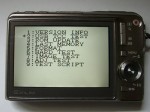
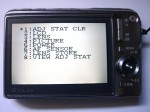
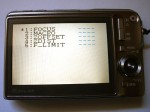
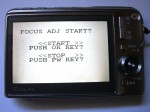

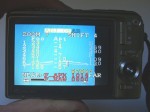
Leave a Reply